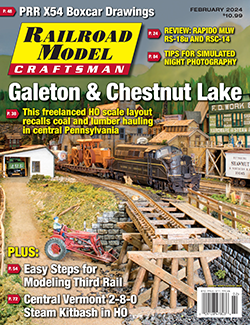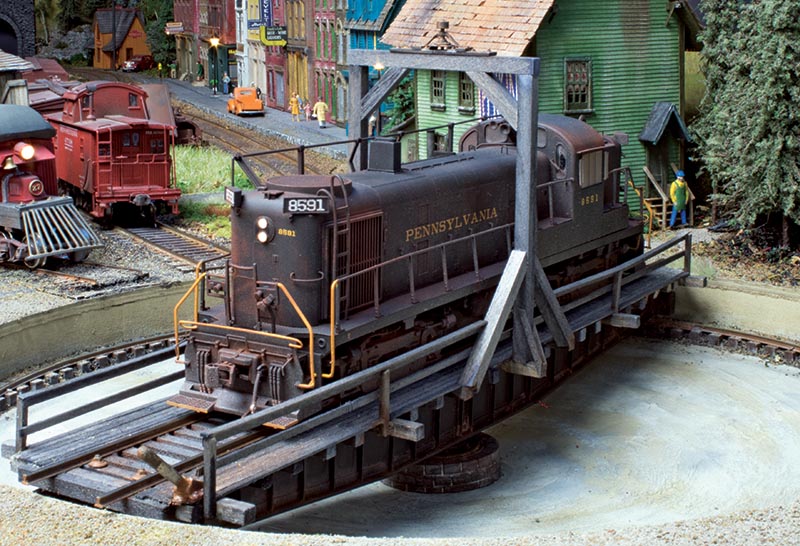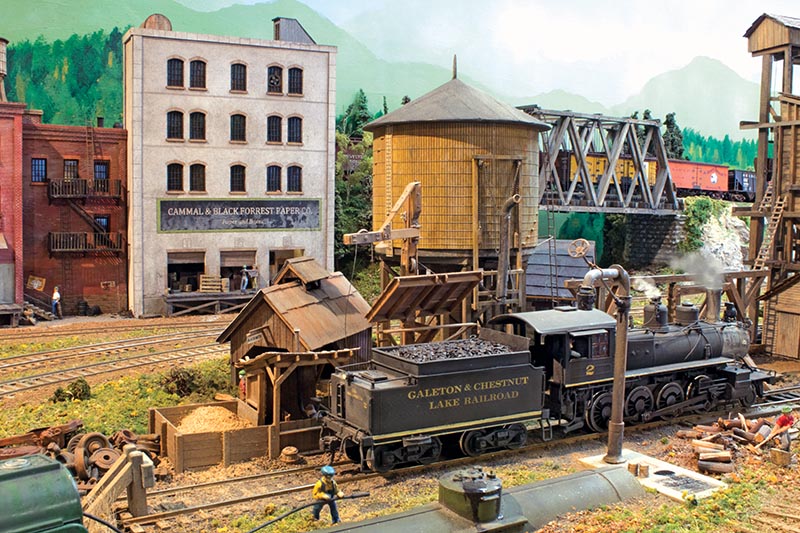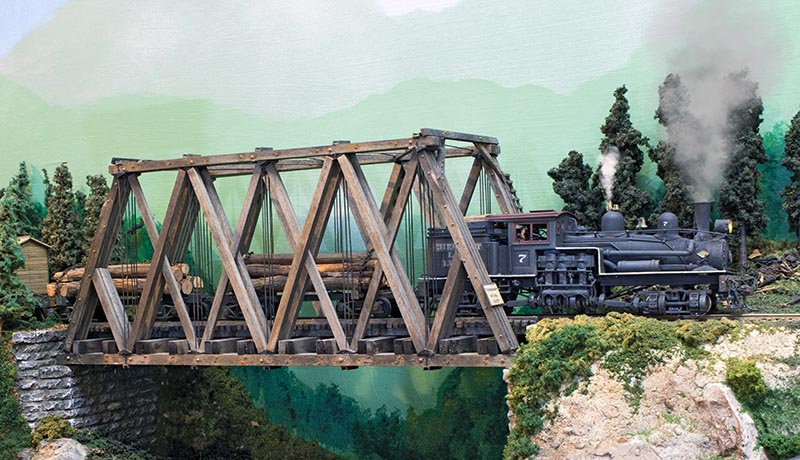 by Jerry Lauchle, MMR/photos by the author
by Jerry Lauchle, MMR/photos by the author
Growing up in the north-central Pennsylvania town of Montoursville, once known as the lumber capital of the world, it was a short walk from our house (presently located right next door to Bowser Manufacturing) to the Reading tracks that headed west to Williamsport and east to Lewisburg. The spot I frequented often was behind a large furniture factory with a spur. Railfanning was particularly rewarding when a freight spotted flatcars loaded with lumber onto that spur. Of course, lumber was not the only commodity hauled on those trains; scores of coal hoppers were there too.
Although I had a small collection of American Flyer and HO-scale trains in those pre-teen years, there was no room for a layout that would capture the coal, logging, and lumber operations that I grew up with. This dream was put on hold for 27 years until I was settled into my own house with space and resources to begin serious model railroading.
For some reason, I decided my freelanced model railroad would have the same acronym as my formal name, Gerald Clyde Lauchle. Coming up with place names, there was lots of logging and coal mining to the north of where I grew up, in Galeton, Pa. I decided my railroad would be a short line connecting Galeton with the ficticious Chestnut Lake, and the Galeton & Chestnut Lake Railroad was born.

ABOVE: The 65 ft. turntable in Renovo is used to turn Pennsylvania Railroad Alco RS-3 8591 after returning from Galeton.
During the 1980s and 1990s most of my hobby activity involved building craftsman kits of rolling stock and structures. I also re-motored several brass locomotives, and painted and lettered them for my G&CL. I had two layouts started in that period, but they were never finished due to a couple of moves. Our current residence was custom-built in 2004 and included the proper basement space for a modest layout. I retired in 2006 and resumed in earnest the goal of building and finishing my dream model railroad.
Design
My design went through several iterations before I began construction in 2010. During those early years, I tested for radon radiation in the basement, which resulted in having to install mitigation plumbing and fans. I then finished the basement walls, ceiling, and floor, making sure that I had excellent overhead lighting. During this time I also reworked my brass locomotives to have DCC and sound.
I decided on the steam-to-diesel transition era because that was the era of my pre-teen years (1945-1957). Besides, I like diesels just as much as steam locomotives. Working with the 16×20 ft. area in the basement, I designed the railroad as a walk-in with four walls. It includes a liftout for entrance, but I also installed a bathroom handrail under the liftout for folks to grab onto if they decide to duck under the lift-out.

ABOVE: The Galeton steam locomotive service area supports all essential needs including water for the boilers, sand for traction, an ash pit to receive firebox ashes, and a supply of coal, oil, and wood for locomotive fuel. There is even a blacksmith shop here for some emergency repairs.
The layout is composed of 2-foot wide shelves around the inside perimeter of the space. The main line is a two-lap arrangement. For example, trains make two circuits of the layout area before retracing their original route. The railroad has two interchanges with the Pennsylvania Railroad (PRR): one at Williamsport and the other at Renovo. There are staging yards at those two locations and both have scratchbuilt turntables. There is a branch out of Chestnut Lake to a coal transfer station at East Junction. Here, coal carried on the G&CL standard gauge line transfers to narrow-gauge gondolas of an unnamed railroad that disappears into a tunnel. Bituminous coal is mined near Chestnut Lake and a tipple there permits loading it into hoppers and gondolas. The Chestnut Lake Lumber Co., including a saw mill, is located midway between Chestnut Lake and Galeton. The main yard and locomotive service area are located in Galeton. Several other smaller customers are served along the route as well.
Construction
The benchwork is basic L-girder construction using pine and basswood lumber. I included the 24” high backdrop support lattice as an integral part of the benchwork. I bandsawed a 24” length of 8” diameter Quik-Tube Building Form into quarters. These form the inside coved corners of the backdrop (see April 2017 NMRA Magazine). The backdrop is 1/8” Masonite hardboard that I hand-painted with artists’ acrylic paints.
The flat portions of the layout at 48” elevation are covered with half-inch-thick plywood and half-inch-thick Homasote. Elevated track reaches 4½-in above the flat portions, which is achieved with risers fastened to the joists resting upon the L-girders. Half-inch-thick plywood and quarter-inch-thick Homabed are secured to the tops of the risers (Note: Homabed is now manufactured by Central & Western HomaRoad Supply)…




